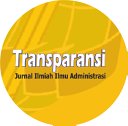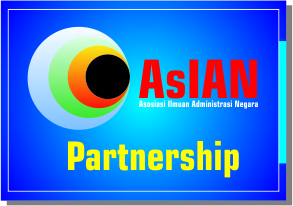Pengaruh Budaya Kerja dan Pengawasan Terhadap Kinerja Karyawan (Studi Kasus di PT Bank DKI Capem Syariah Margonda, Depok)
DOI:
https://doi.org/10.31334/trans.v9i2.31Keywords:
Work Culture, Supervision and Employee PerformanceAbstract
Work Culture Influence and Supervision of Employee Performance in PT Bank DKI Sharia Capem Margonda, Depok. This study stems from the emergence of the phenomenon that the performance of the employees of Bank DKI Sharia Capem Margonda, Depok not run optimally, because they found that the employee's performance is not optimal, it is seen from the phenomenon has not grown maximum employee morale, not maximal work discipline in accordance with what is expected, still slow service work done on the client, still less cepeta in response to complaints or complaints from customers, is still not maximal work as expected, and so forth. The poor performance caused by many factors including work culture, supervision, planning, work motivation, work ethic, budgeting, productivity and so on, but researchers suspect that the most critical factors that affect the performance of the employee is deemed work culture and supervision. The purpose of this study was to menganilisis how much influence the work culture and supervision of employee performance.
The sampling method used is saturated sample, where all the population of 40 employees sampled, because there is not much .. The data that have met the test of validity and reliability testing further processed to produce a regression equation Y = 0.242+ 0286 X1 + 0699 X2, where Y is the variable performance of the employee, is the variable X1 and X2 are working culture control variables.
Hypothesis testing using t test showed that each of the independent variables studied was shown to significantly partial effect on the dependent variable employee performance. Then through the F test can be seen that both the independent variables studied proved simultaneously affect the dependent variable employee performance. Figures Adjusted R Square of 0.5625 indicates that the work culture together with monitoring employee performance variables can be explained by 56.25%, while the remaining 43.75% is explained by other variables.
References
Ambar T. S., dan Rosidah, 2003. Manajemen Personalia dan Sumber Daya Manusia. Jakarta: Erlangga.
Amirullah dan Haris Budiono. 2004. Pengantar Manajemen. Cetakan Kedua. Graha. Ilmu. Anoraga. Yogyakarta
Arikunto, S., 2002. Prosedur Penelitian Suatu Pendekatan Praktek. Jakarta: PT. Bina Aksara.
Azwar, 2000. Sikap Manusia, Teori dan Pengukurannya. Edisi Kedua. Yogyakarta: Pustaka Pelajar.
Biatna, D.T., 2007. Analisis Faktor Gaya Kepemimpinan dan Faktor Etos Kerja Terhadap Kinerja Pegawai Pada Organisasi yang Telah Menerapkan SNI 19-9001-2001.
Jurnal Manajemen dan Bisnis. Mangkunegara A. P., 2007. Manajemen Sumber Daya Manusia Perusahaan. Jakarta: PT. Remaja Rosdakarya.
Mathis dan Jackson, 2002. Organizational Behavior and Management. Business Publishing Inc. Texas.
Nawawi, H., 2003. Administrasi dan Organisasi Bimbingan dan Penyuluhan. Jakarta: Ghalia Indonesia.
Nurgiyantoro, B., 2004. Statistik Terapan Untuk Penelitian Ilmu – Ilmu Sosial. Yogyakarta: Gadjah Mada University Press.
Prawirosentono, 2005. Meningkatkan Kinerja Karyawan. Jakarta: Cipta Persada.
Rani, M., 2009. Pengaruh Gaya Kepemimpinan Dan Budaya Organisasi Terhadap Kinerja Karyawan Melalui Kepuasan Kerja Karyawan Sebagai Variabel Intervening Studi Pada Kantor Pusat PT.Asuransi Jasa Indonesia (Persero). Tesis. Universitas Diponegoro Semarang.
Robbins, S., 2006. Organizational Behaviour, Concepts. San Diego State University: Prentice Hall International Inc.
Siagian, S., 2002. Manajemen Stratejik. Jakarta: Bumi Aksara.
Simanungkalit, H., 2009. Pengaruh Diklat Teknis dan Motivasi terhadap kinerja alumni Balai Diklat Industri Regional I Medan.
Jurnal Manajemen dan Bisnis. Sekolah Pascasarjana Universitas Sumatera Utara.
Robbins, Stephen P. 1988. Essentials of Organizational Behavior , page 299-310. Englewood Cliffs, New Jersey : USA
Suprihanto, J., 2004. Penilaian Kinerja dan Pengembangan Karyawan. 1st ed. Yogyakarta: BPFE. Triguno, 2006. Budaya Kerja. Jakarta: PT. Golden Trayon.
Van Apeldoorn, 1976, Pengantar Ilmu Hukum, Pradnya Paramita, Jakarta
Downloads
Published
Issue
Section
License

This work is licensed under a Creative Commons Attribution-ShareAlike 4.0 International License
Please find the rights and licenses in Transparansi : Jurnal Ilmiah Ilmu Administrasi By submitting the article/manuscript of the article, the author(s) agree with this policy. No specific document sign-off is required.
- License
The commercial use of the article will be governed by the Creative Commons Attribution license as currently displayed on Creative Commons Attribution-ShareAlike 4.0 International License.
2. Author(s)' Warranties
The author warrants that the article is original, written by stated author(s), has not been published before, contains no unlawful statements, does not infringe the rights of others, is subject to copyright that is vested exclusively in the author and free of any third party rights, and that any necessary written permissions to quote from other sources have been obtained by the author(s).
3. User Rights
Transparansi : Jurnal Ilmiah Ilmu Administrasi spirit is to disseminate articles published are as free as possible. Under the Creative Commons license, Transparansi : Jurnal Ilmiah Ilmu Administrasi permits users to copy, distribute, display, and perform the work for non-commercial purposes only. Users will also need to attribute authors and Transparansi : Jurnal Ilmiah Ilmu Administrasi on distributing works in the journal and other media of publications.
4. Co-Authorship
If the article was jointly prepared by more than one author, any authors submitting the manuscript warrants that he/she has been authorized by all co-authors to be agreed on this copyright and license notice (agreement) on their behalf, and agrees to inform his/her co-authors of the terms of this policy. Transparansi : Jurnal Ilmiah Ilmu Administrasi will not be held liable for anything that may arise due to the author(s) internal dispute. Transparansi : Jurnal Ilmiah Ilmu Administrasi will only communicate with the corresponding author.
5. Miscellaneous
Transparansi : Jurnal Ilmiah Ilmu Administrasi will publish the article (or have it published) in the journal if the article’s editorial process is successfully completed. Transparansi : Jurnal Ilmiah Ilmu Administrasi editors may modify the article to a style of punctuation, spelling, capitalization, referencing and usage that deems appropriate. The author acknowledges that the article may be published so that it will be publicly accessible and such access will be free of charge for the readers as mentioned in point 3.
Every accepted manuscript should be accompanied by "Copyright Transfer Agreement"prior to the article publication.











